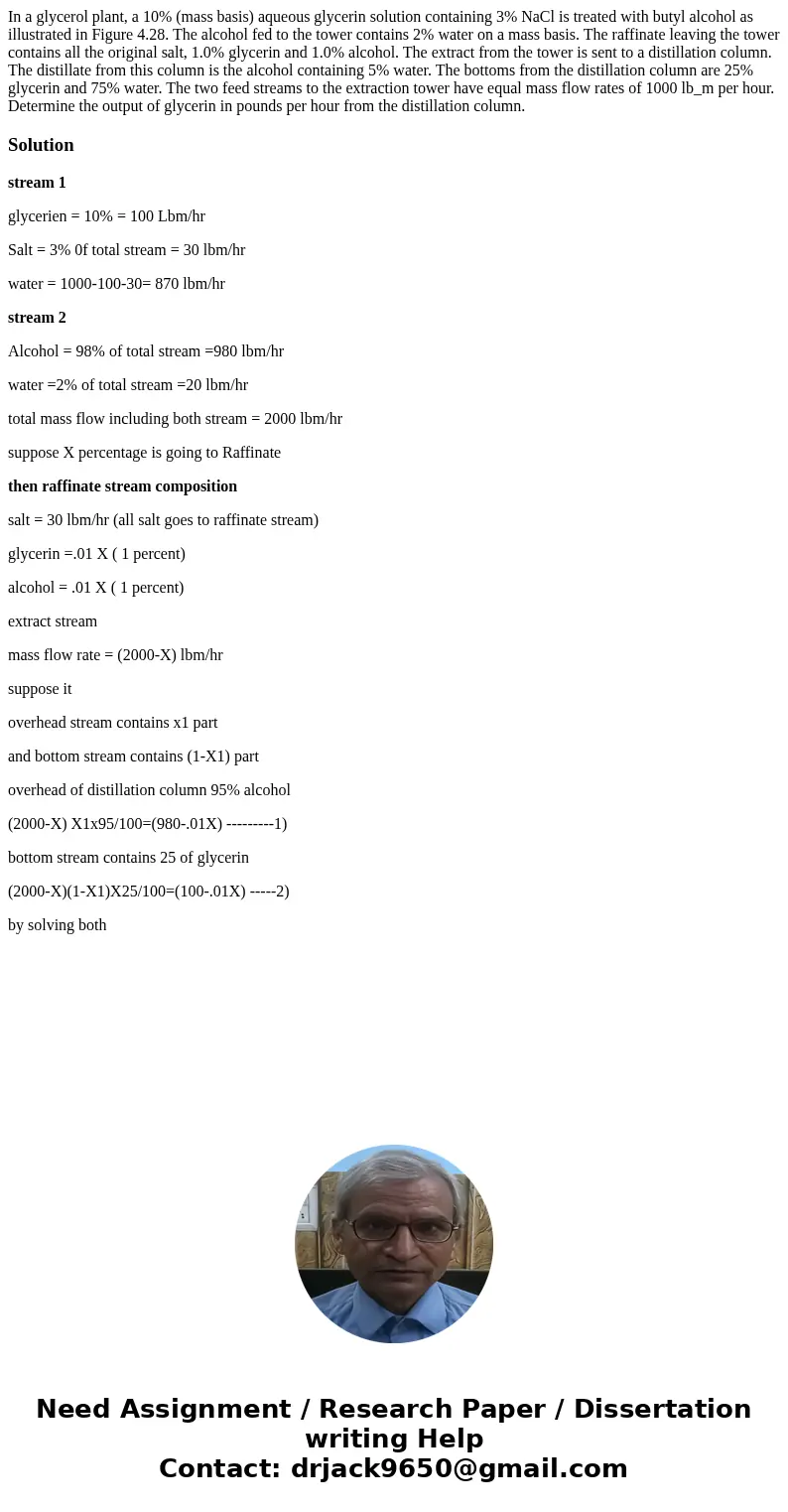In a glycerol plant a 10 mass basis aqueous glycerin solutio
In a glycerol plant, a 10% (mass basis) aqueous glycerin solution containing 3% NaCl is treated with butyl alcohol as illustrated in Figure 4.28. The alcohol fed to the tower contains 2% water on a mass basis. The raffinate leaving the tower contains all the original salt, 1.0% glycerin and 1.0% alcohol. The extract from the tower is sent to a distillation column. The distillate from this column is the alcohol containing 5% water. The bottoms from the distillation column are 25% glycerin and 75% water. The two feed streams to the extraction tower have equal mass flow rates of 1000 lb_m per hour. Determine the output of glycerin in pounds per hour from the distillation column. 
Solution
stream 1
glycerien = 10% = 100 Lbm/hr
Salt = 3% 0f total stream = 30 lbm/hr
water = 1000-100-30= 870 lbm/hr
stream 2
Alcohol = 98% of total stream =980 lbm/hr
water =2% of total stream =20 lbm/hr
total mass flow including both stream = 2000 lbm/hr
suppose X percentage is going to Raffinate
then raffinate stream composition
salt = 30 lbm/hr (all salt goes to raffinate stream)
glycerin =.01 X ( 1 percent)
alcohol = .01 X ( 1 percent)
extract stream
mass flow rate = (2000-X) lbm/hr
suppose it
overhead stream contains x1 part
and bottom stream contains (1-X1) part
overhead of distillation column 95% alcohol
(2000-X) X1x95/100=(980-.01X) ---------1)
bottom stream contains 25 of glycerin
(2000-X)(1-X1)X25/100=(100-.01X) -----2)
by solving both

 Homework Sourse
Homework Sourse